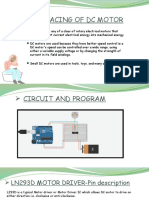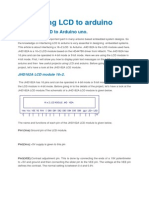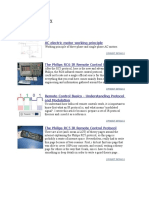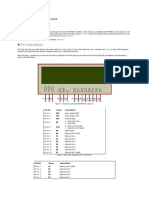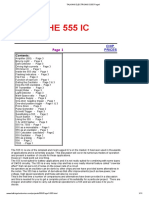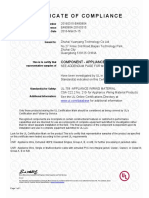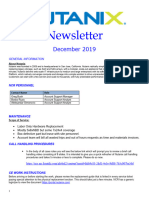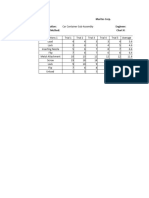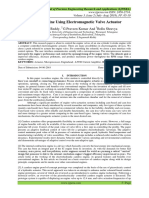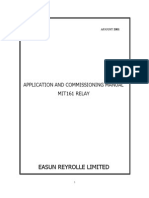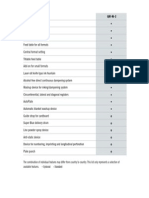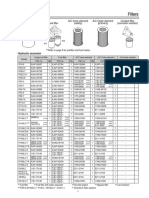0% found this document useful (0 votes)
639 views1 page555 Timer Pinout
Pin 1 connects the 555 timer chip to ground. Pin 2 triggers the timer when voltage drops below 1/3 of the supply voltage. Pin 3 is the output pin that is either high or low. Pin 4 can restart the timer's operation when momentarily grounded. Pin 5 is usually connected to ground through a small capacitor to level voltage fluctuations. Pin 6 monitors the voltage across the discharge capacitor. Pin 7 discharges the external timing capacitor connected through a resistor. Pin 8 connects to the positive DC power supply voltage between 4.5V and 15V required to operate the 555 timer chip.
Uploaded by
framirezbCopyright
© © All Rights Reserved
We take content rights seriously. If you suspect this is your content, claim it here.
Available Formats
Download as DOCX, PDF, TXT or read online on Scribd
0% found this document useful (0 votes)
639 views1 page555 Timer Pinout
Pin 1 connects the 555 timer chip to ground. Pin 2 triggers the timer when voltage drops below 1/3 of the supply voltage. Pin 3 is the output pin that is either high or low. Pin 4 can restart the timer's operation when momentarily grounded. Pin 5 is usually connected to ground through a small capacitor to level voltage fluctuations. Pin 6 monitors the voltage across the discharge capacitor. Pin 7 discharges the external timing capacitor connected through a resistor. Pin 8 connects to the positive DC power supply voltage between 4.5V and 15V required to operate the 555 timer chip.
Uploaded by
framirezbCopyright
© © All Rights Reserved
We take content rights seriously. If you suspect this is your content, claim it here.
Available Formats
Download as DOCX, PDF, TXT or read online on Scribd
/ 1



